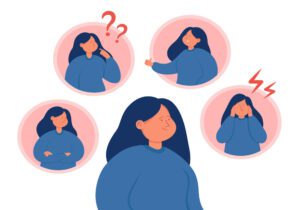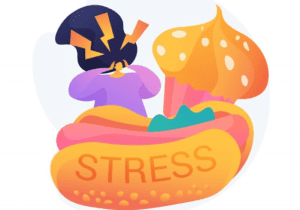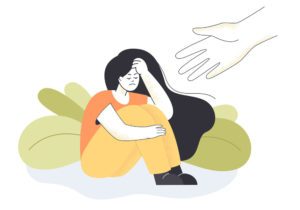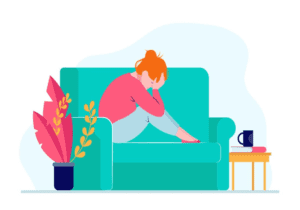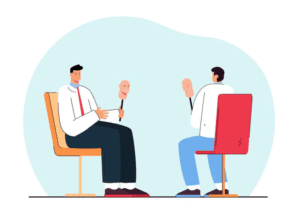Learn Exactly What Panic Attacks Are And Some Effective Ways to Manage Them
This article has been researched and written by Dalea Alawar. AI has not been used in producing this article.
The confusing reality of a panic attack: your body’s built-in alarm system has gone off when there’s no real threat. It feels very frightening in the moment! In this article, I aim to help you understand how and why a panic attack happens, and what you can do to switch off that alarm system in your brain. First, let us start with explaining what a panic attack is. A panic attack is like your body’s fire alarm going off by mistake. This alarm is designed to keep you safe from danger, also called the fight-or-flight response. When it goes off at the correct time, it’s extremely helpful and often lifesaving, such as how alert you become when a car swerves at you.
But sometimes, this alarm gets triggered when there’s no actual danger, maybe because you’re stressed, tired, worried, or your body is sensitive to certain changes (like how coffee can cause a racing heart). When this happens, the brain misreads normal body sensations as a sign of danger and sets off the safety alarm.
Here are some symptoms of a panic attack: Rapid heartbeat; shortness of breath; sweating or shaking; dizziness or lightheadedness; or a strong feeling of dread.
Because the symptoms feel so intense and uncomfortable, your mind may start thinking something terrible is happening, like a heart attack or losing control, which makes the panic stronger. The important thing to remember is that panic attacks are not actually dangerous, and they always pass, even if they feel scary.
Here are some tips to ease the intensity of a panic attack:
1. Empty out all the air from your lungs and then breathe at a slower rate. Rapid breathing makes your panic stronger. It also feels harder to breathe because you aren’t emptying out all the air from your lungs before you take in more air. So, blow out all the air, as if you are deflating a balloon, and then take slower breaths, so you can go back to breathing naturally. If you’re having a hard time doing this, breathe in and out of a straw or into a paper bag.
2. Relax your muscles. This sends the message to your brain that you are not actually in real danger.
3. Put your hands in icy cold water: Or splash very cold water on your face or put an ice pack on your neck. This sudden change in your body’s temperature can snap your body out of “danger” mode.
4. Get out of your head and into your present moment: What fuels a panic attack are all the racing thoughts you are having. Shift attention away from your mind by engaging in the 5-4-3-2-1 technique:
- Name 5 things you can see, 4 things you can touch, 3 things you can hear, 2 things you can smell, and 1 thing you can taste.
Panic attacks can feel intense and frightening, but they are not harmful. The more you practice calming techniques, the more confident you will feel in handling them. Over time, your body learns that these symptoms are just false alarms, not real emergencies.
How to Help Your Child with Anxiety Through Divorce
Divorce is a significant change that affects every member of a family. For children, the uncertainty and adjustments …
Depression vs Sadness: Understanding the Difference
While often used interchangeably, the terms “sadness” and “depression” represent distinct emotional states, each with …
5 Simple Mental Health Practices for Your Everyday Life: Nurturing Your Body & Mind
In today’s fast-paced world, it’s becoming increasingly evident that we need to place our mental health at the forefront
Ways to Reduce Anxiety in 2024
As we say farewell to 2022 and usher in the New Year, we look towards the future. With New Year’s resolutions on the docket, many of us are striving to achieve a calm life …
Navigating Compassion Fatigue in the Digital Age: A Call to Prioritize Mental Well-Being
Amid the constant stream of information and images that flood our screens, the toll on our mental well-being can be …
The Link Between Anxiety and Overeating
All of us have encountered moments of stress and unease throughout our lives. These feelings of anxiety not only bring…
10 Steps To Fix A Toxic Relationship
Every relationship has its fair share of ups and downs, but when toxicity creeps in, it can become a serious challenge. Toxic relationships can be emotionally draining and detrimental to our overall …
Exploring the Benefits of EMDR Therapy for Anxiety and Depression
Anxiety and depression are two of the most common mental health disorders worldwide, affecting millions of people every year. While traditional talk therapy and medication can be …
Health Effects of Untreated Depression
It’s very common to feel sadness at one point or another in our life. Depending on your specific circumstances, you may even feel …
Psychologists vs. Psychiatrists – What’s the Difference?
Clients shouldn’t have to jump through hoops to understand who the perfect candidate is for treating their emotional and/or behavioral struggles. Yet, understanding the type of provider you should see during …





